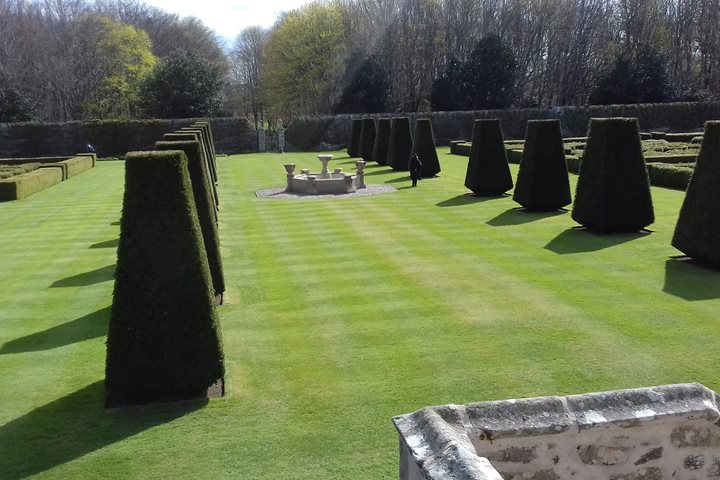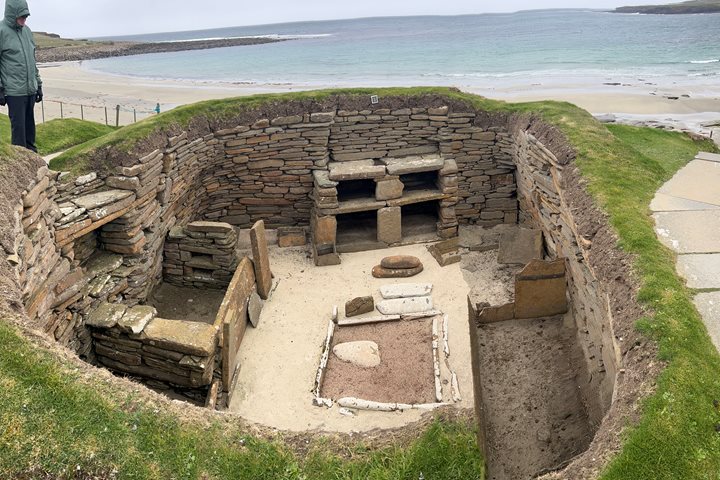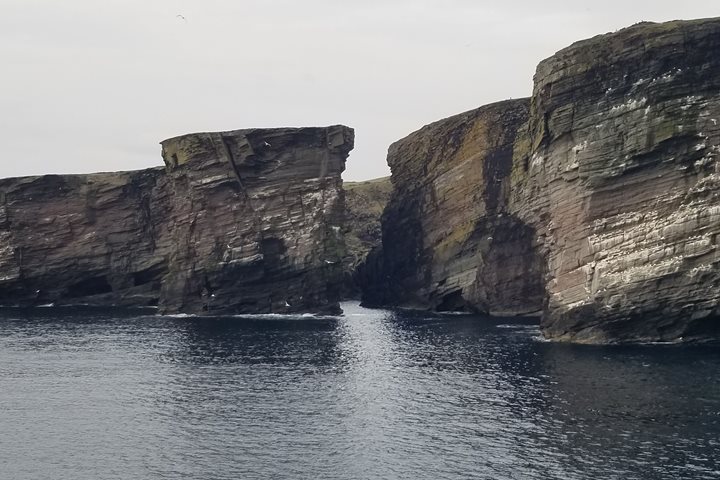The morning found us anchored off the beautiful island of Iona. With great excitement we boarded Zodiacs and made our way through the slightly choppy waves to the sacred isle. This was Iona, where St. Columba first landed in 563 AD. While the rest of Britain was thrown into the Dark Ages, this small island became the beacon of hope and birthplace of Christianity in Scotland.
Landing at a small jetty, we were greeted by a wonderful team of local guides who led us through the island sharing local stories, ancient history, and their love of this place. They told us of Iona’s close connection to St. Columba as we walked along the ancient pilgrim road to the humble church he erected.
We paused at the ancient MacLean Cross from the 1400s and pondered how many had walked this very way and how important these ancient crosses were to all who came seeking salvation. As we made our way onwards to the Abbey on the “road of the dead,” we learned that 48 kings of Scotland, Ireland, and Norway were brought here for burial.
As the Abbey came into view, rain silently fell from the heavens as we made our way down to the entrance and the ancient cross of St. Martin. Made of red granite and covered in Celtic carvings, it stands over 14 feet high. It is very similar in sculptural design to some of the Irish high crosses, with its typical ring-head.
In the Abbey, we learned the story of this 19th century building and the passionate work of the Iona community in its preservation and worship. We paused before moving through the cloisters and looking closely at the ancient gravestones with intricate designs and ancient warrior carvings.
In the afternoon, we made our way to Staffa and Fingal’s Cave. The stunning natural wonder was formed by the same type of lava that created the Giant’s Causeway in County Antrim between 50 and 60 million years ago. Our excitement grew as out ship drew closer and Staffa came into view through the thin grey veil of the misty rain.
The wind had picked up and the scouting team headed out on a Zodiac to check the landing options. Unfortunately, landing conditions were not favorable, so the captain moved us in for a closer view of the incredible basalt columns. As we turned to sail away, Felix Mendelssohn’s “Hebrides Overture,” known as “Fingal’s Cave,” played through the speakers over the sound of waves.
Writer: Seumas Macletchie







